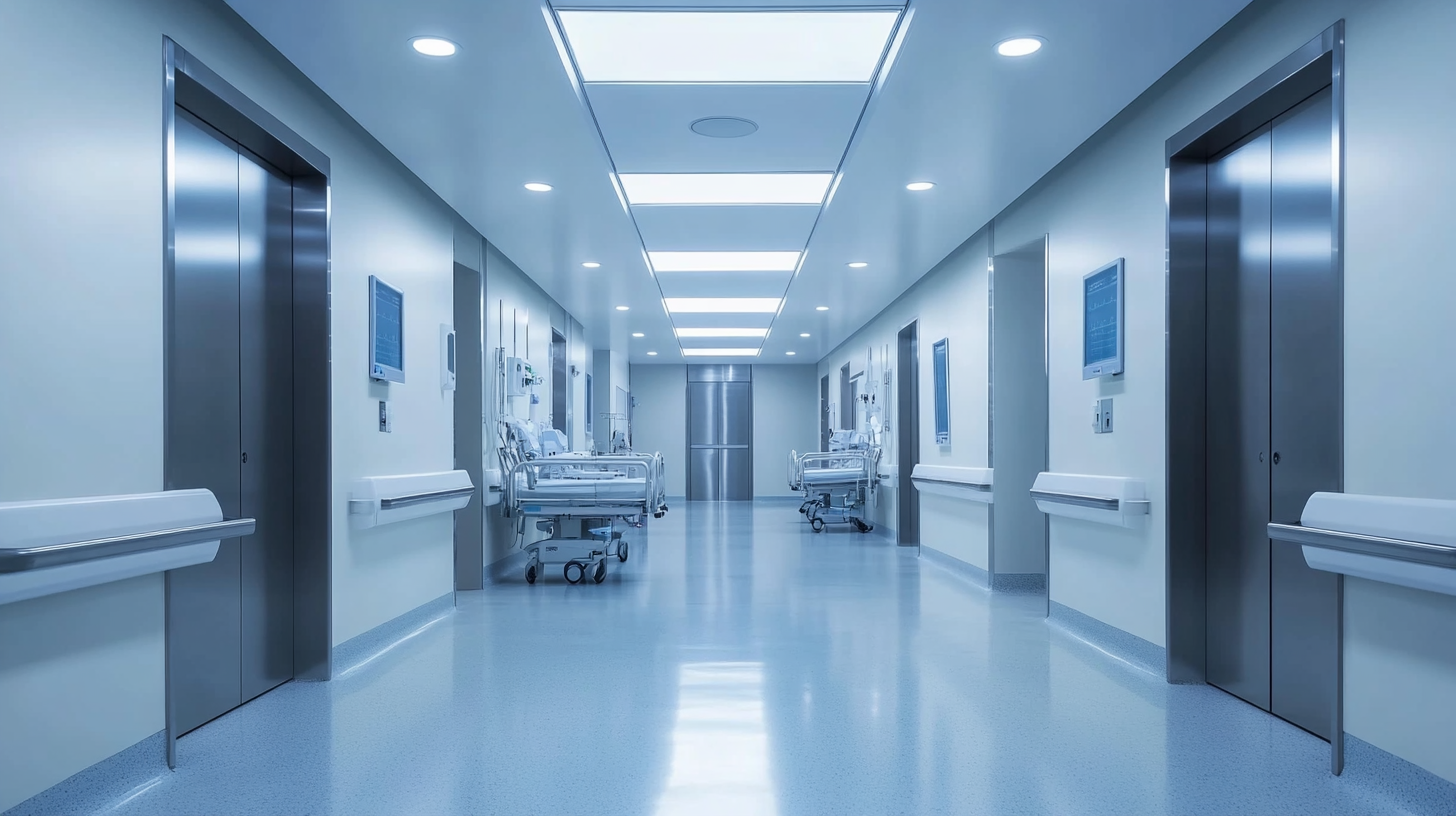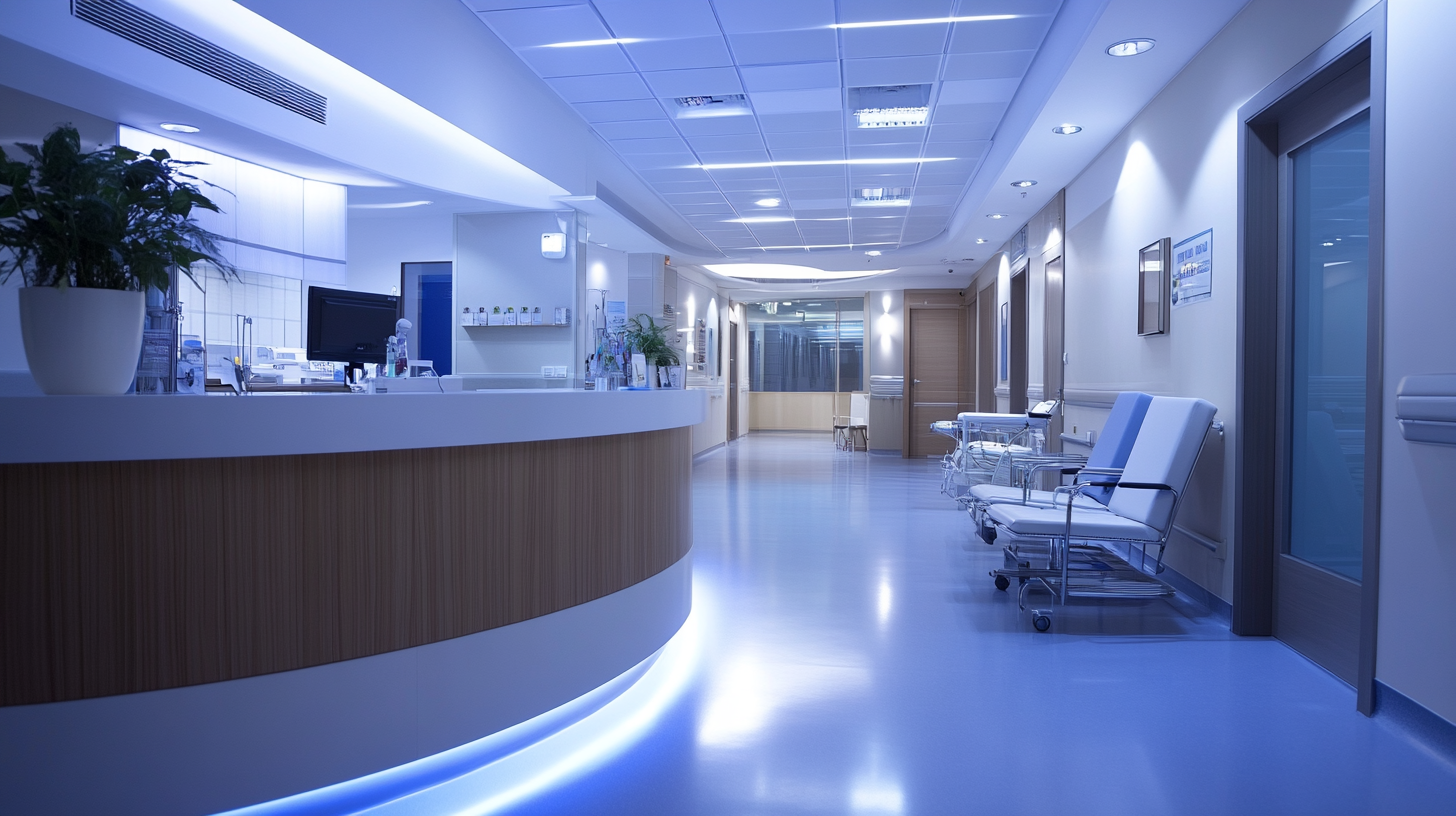Introduction
Lighting plays a crucial role in healthcare environments, impacting patient recovery, staff performance, and overall well-being. LED lighting has become the preferred choice in hospitals, clinics, and medical facilities due to its energy efficiency, durability, and ability to support circadian rhythms. This article explores how LED lighting improves patient care, operational efficiency, and safety in healthcare settings.
1. Enhancing Patient Comfort and Recovery
1.1 Supporting Circadian Rhythms
- Natural light exposure is vital for maintaining circadian rhythms, which regulate sleep and recovery.
- Tunable white LEDs can simulate natural daylight, promoting better sleep patterns for patients.
- Studies show that circadian lighting reduces stress, anxiety, and recovery time.
1.2 Reducing Glare and Eye Strain
- Low-glare LED panels provide soft, uniform illumination, minimizing discomfort for patients in hospital rooms and ICUs.
- Indirect lighting techniques help create a calm, healing environment.
1.3 Adjustable Lighting for Different Patient Needs
- Dimmable LED fixtures allow patients to control brightness levels, improving comfort.
- Night lighting with warm tones ensures visibility without disturbing sleep.
2. Improving Medical Staff Efficiency and Safety
2.1 Optimal Lighting for Surgical and Examination Areas
- High CRI (Color Rendering Index) LED lights ensure accurate color perception, essential for diagnostic accuracy.
- Bright, shadow-free illumination in operating rooms and emergency departments improves visibility.
- Adjustable intensity LEDs support different medical procedures.
2.2 Task Lighting for Medical Workspaces
- Focused LED task lights in nurse stations and laboratories enhance precision and productivity.
- Glare-free lighting reduces eye fatigue during long shifts.
2.3 Motion-Activated LEDs for Efficiency
- Occupancy sensors in hallways, patient rooms, and bathrooms automate lighting, improving energy efficiency and reducing the spread of germs by minimizing touchpoints.
3. Enhancing Hygiene and Infection Control
3.1 UV-C LED Disinfection
- UV-C LEDs help eliminate bacteria and viruses in operating rooms and sterile areas.
- Germicidal LED solutions are increasingly used in air purification and surface sterilization.
3.2 Easy-to-Clean LED Fixtures
- Sealed, dust-resistant designs prevent contamination in clean rooms and surgical suites.
- IP-rated LED fixtures withstand frequent cleaning with disinfectants.
4. Energy Efficiency and Cost Savings in Healthcare Facilities
4.1 Lower Energy Consumption
- LED lighting uses up to 70% less energy than fluorescent or halogen lighting.
- Hospitals can significantly reduce electricity bills while maintaining optimal lighting levels.
4.2 Longer Lifespan and Reduced Maintenance
- LEDs last 50,000+ hours, minimizing bulb replacements and maintenance costs.
- Ideal for hard-to-reach areas, such as high ceilings in hospital corridors.
4.3 Smart Lighting Integration
- Automated LED controls adjust brightness based on natural daylight availability.
- IoT-enabled LED systems allow remote monitoring and energy management.
5. Specialized LED Lighting Applications in Healthcare
5.1 Patient Rooms and Recovery Areas
✔ Soft, warm LEDs for a soothing environment.
✔ Dimmable bedside lighting for patient control.
5.2 Surgical Suites and ICUs
✔ High-intensity LED lighting with adjustable brightness.
✔ Shadow-free illumination for precision work.
5.3 Laboratories and Diagnostic Areas
✔ High CRI LEDs for accurate test results.
✔ Cool white lighting (5000K-6500K) for focused tasks.
5.4 Hospital Hallways and Emergency Exits
✔ Motion-activated LED lighting for energy savings.
✔ Backup emergency LED fixtures for power outages.
Conclusion
LED lighting is revolutionizing healthcare facilities by improving patient well-being, staff efficiency, hygiene, and energy savings. With advanced lighting solutions such as circadian-friendly LEDs, UV-C disinfection, and smart controls, hospitals can create safer, healthier, and more cost-effective environments.